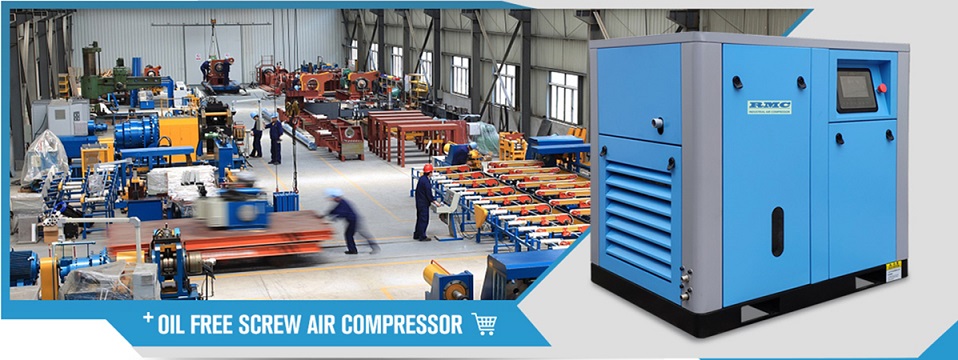 |
Shanghai Royal Machinery Co.,LtdAir compressors, air dryer, tank , line filters and other related compressed air machine supplier |
|
||||||
how permanent magnet vsd screw air compressor saving eneregy
How PM VSD screw air compressor saving electricity:
In terms of construction, how do Permanent Magnet AC (PMAC) motors differ from AC Induction motors?
A. In the broadest sense, the major difference is in the rotor itself. In a squirrel cage induction motor, current is induced into the rotor from the field (stator) through the air gap, and conducted through aluminum (or other material) bars, which are most often die cast in the slots of the rotor laminations. In the case of a PMAC motor, the rotor itself contains permanent magnet material, which is either surface-mounted to the rotor laminations stack or embedded within the rotor lamination. In either topology, electrical power is supplied through the stator windings.
Q. What are the primary benefits of PMAC motor versus AC Induction?
A. Permanent Magnet AC motors are inherently more efficient due to elimination of rotor conductor losses, lower resistance winding and “flatter” efficiency curve. Due to their synchronous operation, PMAC motors offer more precise speed control. PMAC motors provide higher power density due to the higher magnetic flux as compared with induction machines. Finally, Permanent Magnet motors generally operate cooler, resulting in longer bearing and insulation life.
Q. What is the difference between “axial” and “radial” flux motors ?
A. In an axial flux motor, the magnetic force (through the air gap) is along the same plane as the motor shaft, i.e. along the length of the motor. A radial flux motor is the more traditional design, in which the magnetic force is 90° (perpendicular) to the length of the motor/shaft. Think about axial flux like the disc brakes in your vehicle, where the disc rotates like the rotor in an axial flux design. Axial flux is not peculiar to permanent magnet motors.
Q. What applications are more suitable for axial- versus radial-flux designs?
A. The answer depends upon which engineer you speak with, as some are “axial fans” and others favor radial. Seriously, it most often comes down to “form factor”: does the customer require a longer, skinnier (radial) motor or is a “pancake” (axial) design more appropriate for the application? The “tie breaker” may be in the form of cost, as the axial design, once tooled for production, provides equivalent torque but uses less active material…i.e. it’s more “power dense”.
Q. What are some of the major differences in performance between AC Induction and PMAC?
A. The most obvious performance difference is that a PMAC motor rotates at the same speed as the magnetic field produced by the stator windings; i.e. it is a synchronous machine. If the field is “rotating” at 1800 rpm, the rotor turns at the same speed. An induction motor, on the other hand, is considered an asynchronous machine, as its rotational speed is slightly slower than the magnetic field’s “speed”. An asynchronous motor is said to have “slip” (the difference between the motor’s physical speed of, say, 1750 rpm, and its stator’s magnetic speed of 1800 rpm) and cannot produce torque without this difference in speed, as the rotor is constantly trying to “catch up” with the magnetic field. The synchronization of PMAC results in improved efficiency, better dynamic performance and more precise speed control…a major benefit in positioning applications.
Other performance differences include higher efficiency and power factor in a PMAC motor (although system power factor...with a VFD...may not be as high as a motor-only induction machine). Since a permanent magnet rotor lacks conductors (rotor bars), there are no I2R losses, so with everything else equal, a PMAC motor is inherently more efficient. Shorter end turns, due to SyMAX’s winding methodology, provides a number of additional benefits (see next question).
Generally speaking, PMAC motors provide higher flux density than a comparable induction motor. This means that more power (torque) can be produced in a given physical size, or equal torque produced in a smaller package.















